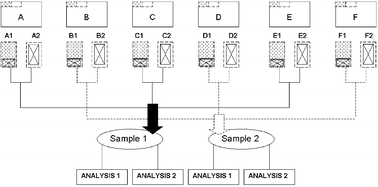Uncertainty estimates from routine sampling and analytical procedures can be assessed as being fit for purpose using the optimised uncertainty (OU) method. The OU method recommends an optimal level of uncertainty that should be reached in order to minimise the expected financial loss, given a misclassification of a batch as a result of the uncertainty. Sampling theory can used as a predictive tool when a change in sampling uncertainty is recommended by the OU method. The OU methodology has been applied iteratively for the first time using a case study of wholesale butter and the determination of five quality indicators (moisture, fat, solids-not-fat (SNF), peroxide value (PV) and free fatty acid (FFA)). The sampling uncertainty (ssamp) was found to be sub-optimal for moisture and PV determination, for 3-fold composite samples. A revised sampling protocol was devised using Gy's sampling theory. It was predicted that an increase in sample mass would reduce the sampling uncertainty to the optimal level, resulting in a saving in expectation of loss of over £2000 per 20 tonne batch, when compared to current methods. Application of the optimal protocol did not however, achieve the desired reduction in ssamp due to limitations in sampling theory. The OU methodology proved to be a useful tool in identifying broad weaknesses within a routine protocol and assessing fitness for purpose. However, the successful routine application of sampling theory, as part of the optimisation process, requires substantial prior knowledge of the sampling target.

You have access to this article
 Please wait while we load your content...
Something went wrong. Try again?
Please wait while we load your content...
Something went wrong. Try again?


 Please wait while we load your content...
Please wait while we load your content...